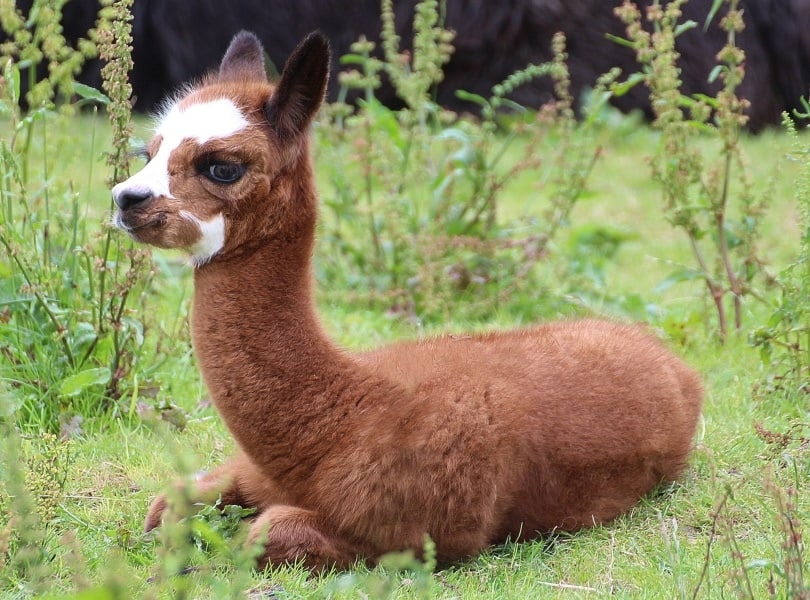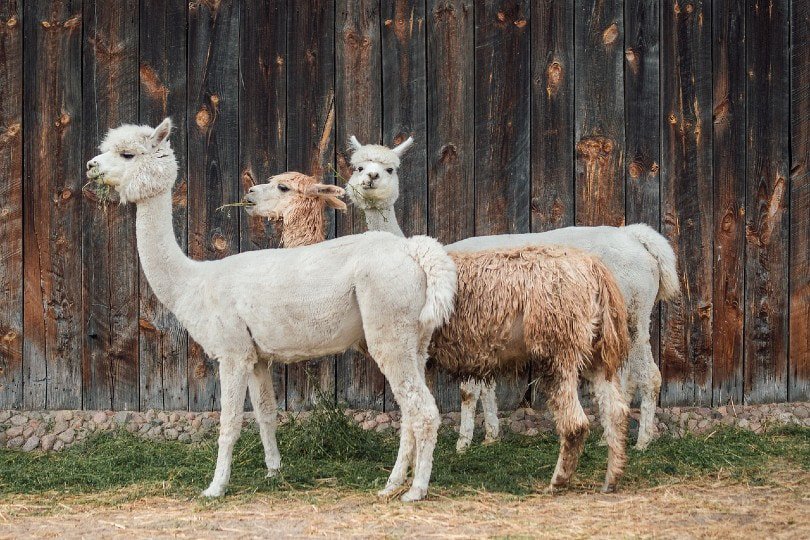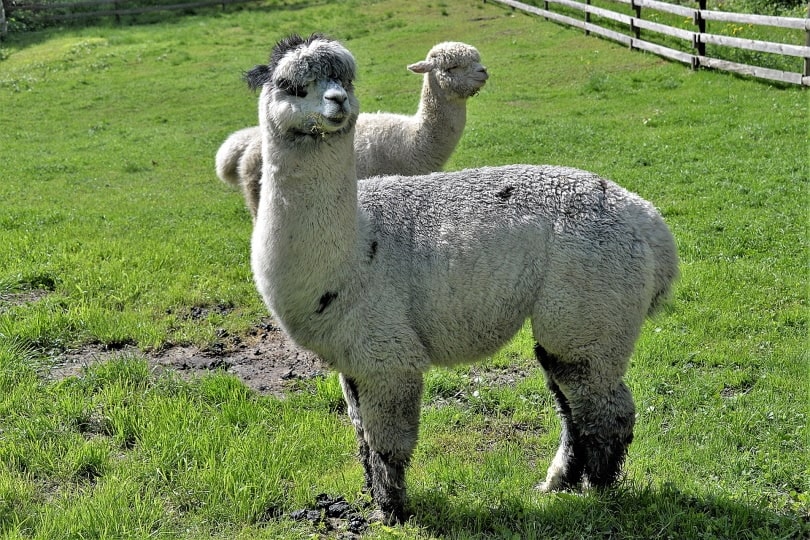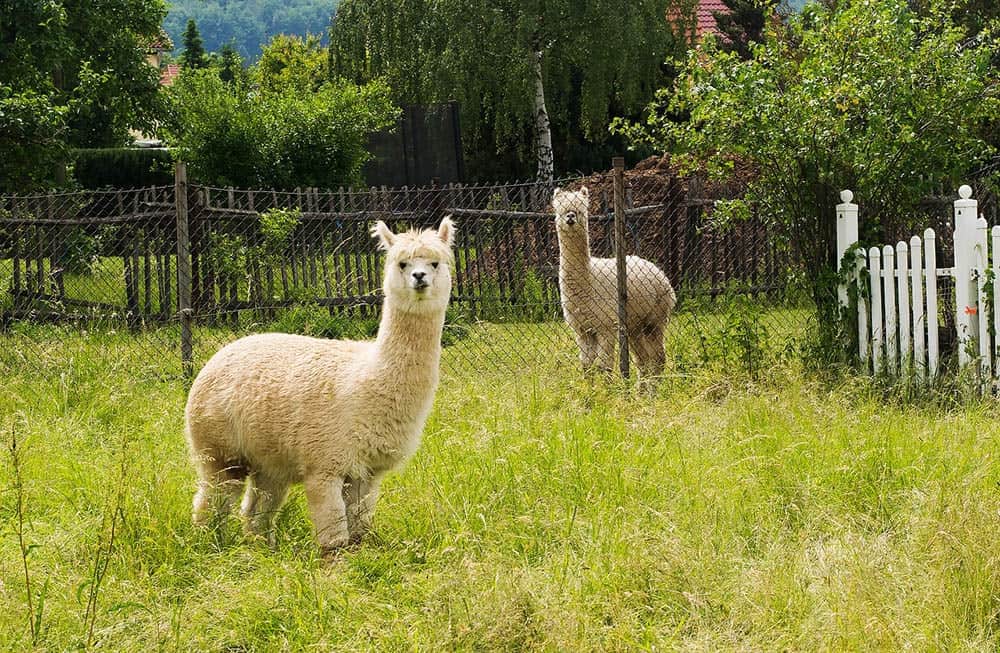Knowing how much space you need to comfortably house an alpaca (or any other livestock for that matter) is one of the most important aspects of owning these amazing creatures. It’s no secret that cattle and horses require a decent amount of acreage to thrive and to keep your land from being destroyed, but how much space do alpacas need?
As a general rule, it is recommended that you have at least one acre of land per every five to eight alpacas. If you have a smaller herd of three animals, half an acre can suffice as long as they have proper shelter and access to hay and water.
Alpaca ownership is an exciting adventure, so let’s dive into the environmental components of properly keeping an alpaca and how to best prepare your property to ensure they have what they need to thrive.
Click to Skip Ahead:

Alpaca Space Requirements
Since alpacas are herd animals, it is important to know that they should never be kept alone. At a minimum, alpacas need to have at least two other alpacas as companions, but the more the merrier (within reason, of course). Herd animals require numbers to feel safe, secure, and maintain proper socialization.

Alpaca Pasture Requirements
Alpacas do not require large amounts of lush pasture for grazing like cattle and horses, they tend to do well on all different types of land. In their natural habitat of South America, they reside in the mountainous areas so they tend to prefer more wooded, hilly terrain but can also thrive on flat pasture.
When kept out in the pasture, it is important to provide plenty of fresh, clean water at all times. Any property used to house alpacas should have a natural water source or be close enough so that you can easily refill water troughs.
Keeping Alpacas Safe and Secure
The most important aspect of your outdoor setup is the safety and security of the pasture. You need to ensure you have secure fencing that can keep your alpacas in and keep any predators out. Many types of fences can be used in your alpaca pasture but most choose sheep fencing.
It is best to avoid electric and barbed wire fencing, as they can be dangerous for alpacas. Fencing should be at least four feet high but five feet is recommended in areas that have predators such as bears or wolves.
Alpacas love to be outside, so having a three-sided shed or some form of structure with an overhang within the pasture to provide shelter or shade during more harsh weather conditions is ideal. You will likely find that this ends up being a popular hang-out.
Separating Males and Females
You should be prepared to keep the intact males separate from the females except for breeding purposes. Gelded males (wethers) should also be kept separate from intact males and do much better housed with the female alpacas or with other wethers. If you do have a breeding operation, you can set up separate pasture areas to keep the intact males away from the others.

Shelter Requirements
As with any livestock, you must have appropriate shelter to house them safely when they are not roaming the pasture. Alpacas are not typically enclosed into a building for the night like some other livestock. Roughly 40 to 50 square feet of space per alpaca is recommended and the best form of housing for them is in a well-ventilated, fully enclosed pole barn.
Alpacas are very adaptable creatures that are built to withstand fluctuations in weather conditions. They are still susceptible to the extremes, however.
It’s a good idea to have built-in fans and well-shaded areas for environments that experience intense heat and high humidity. Alpacas do not tolerate humid conditions very well, especially if they have not been shorn. Make sure they always have direct access to fresh, clean water.
Alpacas will need dirt-covered flooring or any other type of slip-resistant material for their safety. Alpacas should never be kept on bare hard floors such as concrete, as they can easily slip and fall.
- See Also: 2 Types of Alpacas (with Pictures!)

Sharing Pasture With Other Livestock
While some recommended keeping alpacas separate from other livestock, others will allow their alpacas to share pasture. Sheep are the most common pasture mates for herds of alpaca. Some are kept alongside horses and cattle but it is important to consider the temperaments of the animals, as this can be very dangerous for the alpacas.
Alpacas can easily fall victim to bullying from larger pasture mates, which is why they are most commonly found with sheep since they are much more docile overall. It is important to keep in mind that sheep tend to graze heavily, which may impact the alpacas grazing abilities.
If you have the space, it may be best to keep your alpacas in an area that meets their space requirements and is sectioned off from other livestock.

Conclusion
Since alpacas are herd animals that should be kept in groups of at least three animals, you need to ensure you have enough space to house a herd. It is important to have at least one acre available for every five to eight alpacas. Intact males should be kept separate from females and wethers. Alpacas must have shelter available at all times and do well with a fully enclosed pole barn that is appropriate for the herd size.
Featured Image Credit: HansLinde, Pixabay
See also:
